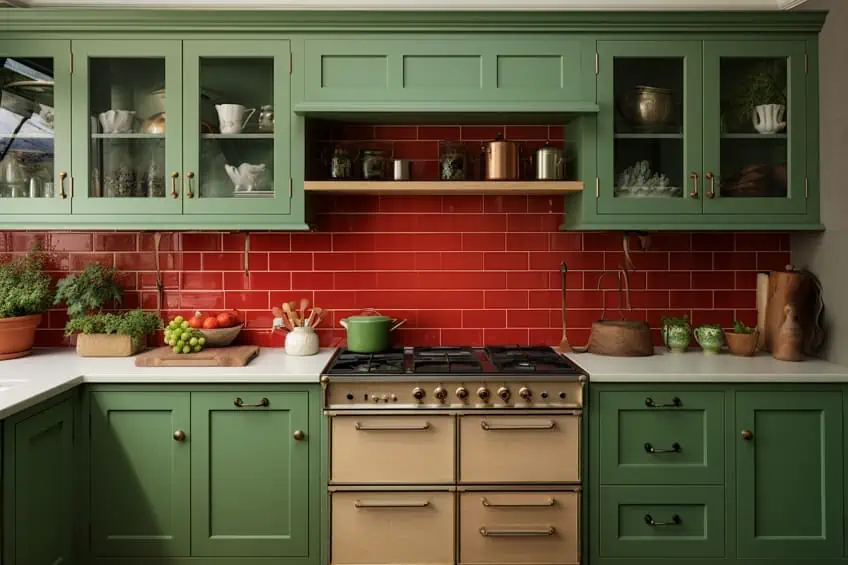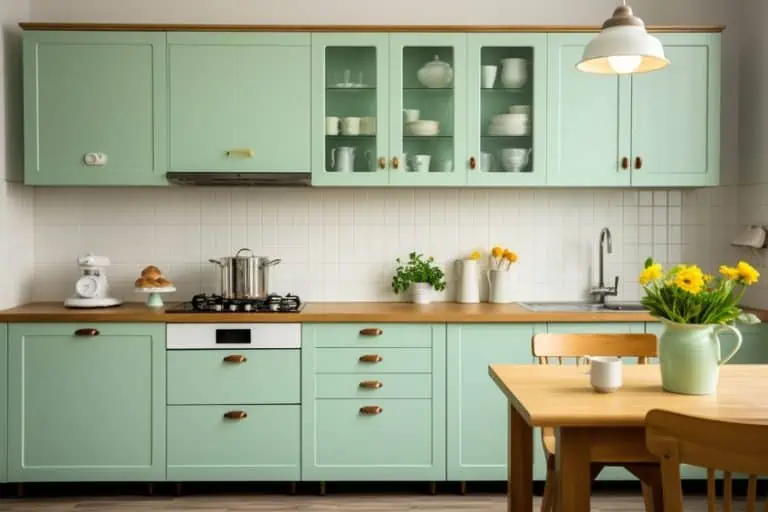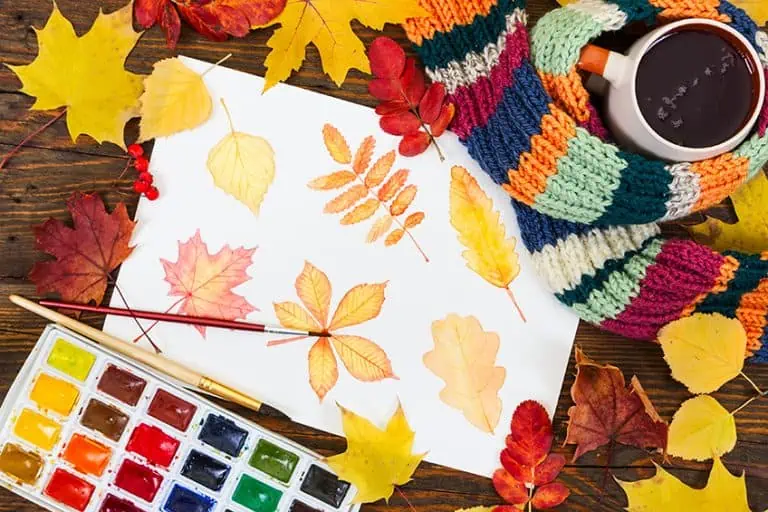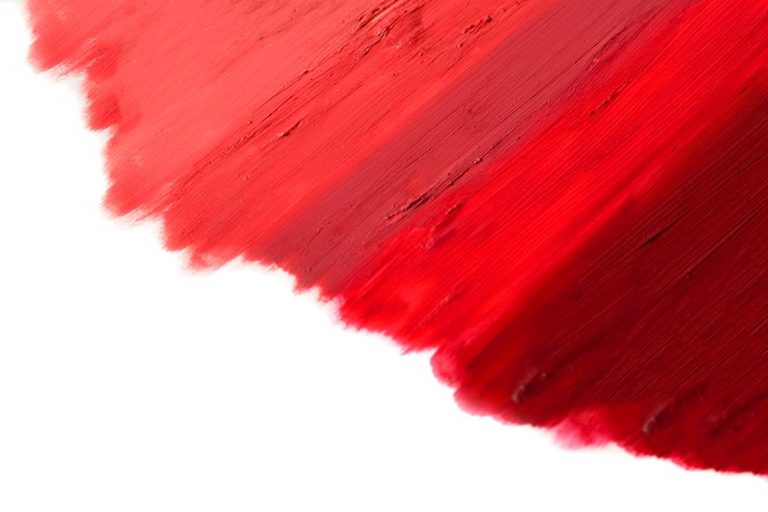What Colors Go With Green? – Elevate Your Palette With 25 Colors
This post may contain affiliate links. We may earn a small commission from purchases made through them, at no additional cost to you.
Green is the color of nature, rebirth, and life. Green has been synonymous with calm and serenity since the dawn of time and will remain a popular color for centuries. When taking a walk to the beach, you are surrounded by nature in all its glory, and while the blue of the sea may capture your attention, the path that you walk will be littered with green hues that combine so well with each other that you are left feeling revived and re-energized. As we explore this beautiful color in more detail, we will discover 25 colors that go well with green, as well as have a look at the green complementary colors.
Table of Contents
- 1 What Color Is Green?
- 2 What Colors Go With Green?
- 2.1 Green and Red
- 2.2 Green and Yellow
- 2.3 Green and Blue
- 2.4 Green and Pink
- 2.5 Green and Orange
- 2.6 Green and White
- 2.7 Green and Navy
- 2.8 Green and Brown
- 2.9 Emerald Green and Pink
- 2.10 Olive Green and Yellow
- 2.11 Mint Green and Coral
- 2.12 Sage Green and Lavender
- 2.13 Forest Green and Gold
- 2.14 Pistachio Green and Soft Gray
- 2.15 Hunter Green and Burgundy
- 2.16 Teal Green and Mustard
- 2.17 Celery Green and Sky Blue
- 2.18 Chartreuse Green and Charcoal Gray
- 2.19 Aqua Green and Peach
- 2.20 Kelly Green and Cream
- 2.21 Seafoam Green and Terracotta
- 2.22 Turquoise Green and Beige
- 2.23 Fern Green and Lilac
- 2.24 Moss Green and Copper
- 2.25 Jade Green and Silver Gray
- 3 Frequently Asked Questions
What Color Is Green?
Green and green may be the most obvious place to start because combining green and green does make a very welcoming palette. The question of what color goes with light green is expected, so let’s look at the greens that complement each other. Sage, chartreuse, mint green, and pistachio shades of green work well in interior design. Why not consider leaving three walls white and painting an accent wall black in a dining room? Using these two colors as your base will allow the different greens to pop around the room. The table and chairs should be neutral, which will add natural warmth to the room but will also be a contrasting color. Beautiful green works of art could be placed on the stark white walls, subtly making the room pop.
| Shade | Hex Code | CMYK Color Code (%) | RGB Color Code | Color |
| Green | #008000 | 100, 0, 100, 50 | 0, 128, 0 | |
| Sage | #87AE73 | 22, 0, 34, 32 | 135,174,115) | |
| Chartreuse | #7FFF00 | 50, 0, 100, 0 | 127, 255, 0 | |
| Mint Green | #3EB489 | 32,0,33,0 | 162,228,184 | |
| Pistachio | #93C572 | 25, 0, 42, 23 | 147, 197, 114 |
What Colors Go With Green?
Interior decorators love working with green color combinations, and the question of what goes with green or what colors go well with sage green is often asked. We will look at some of the favorite combinations you may want to consider when you next have the opportunity to redo a space in your home. In color theory, the green color sits in the center of the color wheel, which means that you can combine the green color with both warm and cooler hues; there are a few factors to take into consideration, such as thinking about a base color or the undertone of the green. Let’s look at what colors go with green and the trendy combinations that will help your choices.
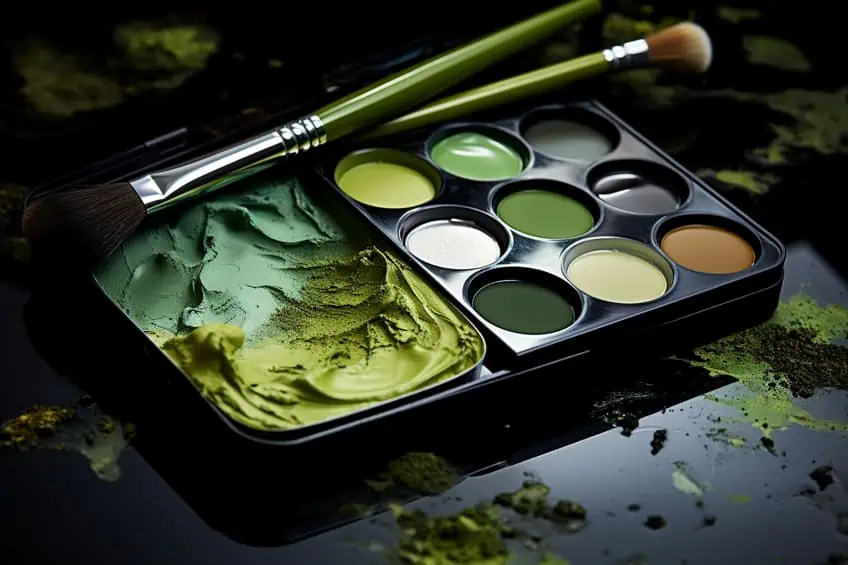
Green and Red
The color combination of green and red sounds a bit daunting, but you would have seen this color combination when you look at Christmas trees during the festive season. The mix sounds ominous, but it indeed does work, and it makes a statement at the same time. You may have thought, well, what color goes with dark green, and the answer is simply “red”?
The color combination would work well in a sitting room where the walls are painted a soft neutral color, and showing off your dark wood furniture will add the perfect backdrop for these two colors. To bring warmth and a bit of contrast into the room, look at hanging big mirrors on the walls and placing a few metal objects strategically around the room. Try combining forest green with a Bordeaux color for a classy look and feel.
| Shade | Hex Code | CMYK Color Code (%) | RGB Color Code | Color |
| Forest Green | #228B22 | 76, 0, 76, 45 | 34, 139, 34 | |
| Bordeaux | #5F021F | 0, 98, 67, 63 | 95, 2, 31 |
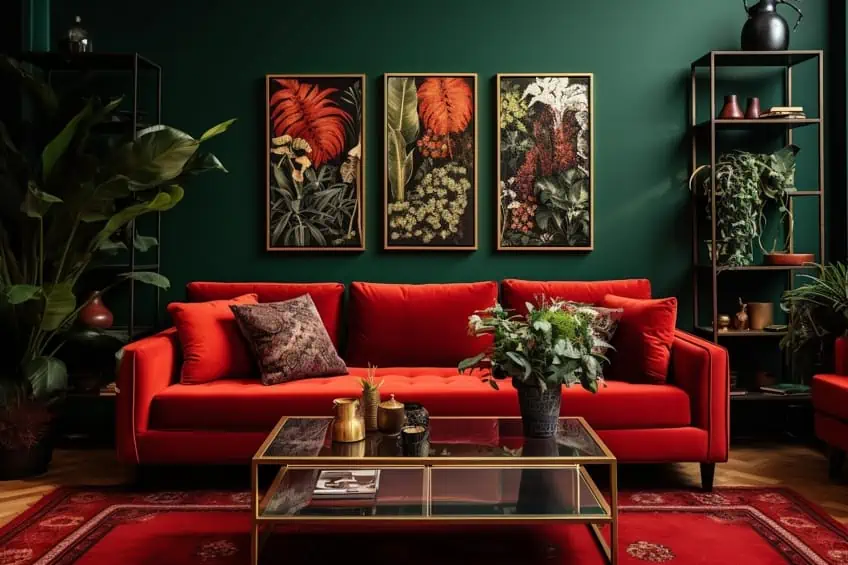
Green and Yellow
The question of what colors go well with sage green or what colors that go well with olive green is, in fact, easy to answer. Yellow and green are adjacent on the color wheel, so it stands to reason that either pistachio or olive green will work as a great combination with lemon yellow. Using these two colors in a bathroom would be ideal. It is a modern look, and against the stark white of a bathroom, the colors will soften the white dramatically.
Yellow is a color that brings energy into a space, and by pairing it with soft sage green, the bathroom will have added warmth. Towels and pot plants in the bathroom will be the accent pieces against the white base color.
| Shade | Hex Code | CMYK Color Code (%) | RGB Color Code | Color |
| Pistachio | #93C572 | 25, 0, 42, 23 | 147, 197, 114 | |
| Olive | #808000 | 0, 0, 100, 50 | 128,128,0 | |
| Lemon Yellow | #FFF44F | 0, 4, 69, 0 | 255, 244, 79 |
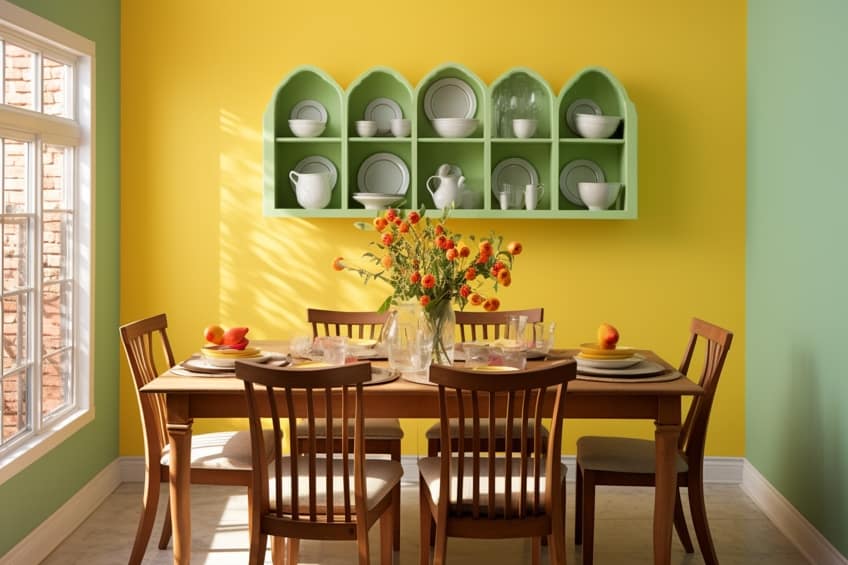
Green and Blue
In interior design, the rule is to break the old saying that the colors blue and green should not be seen together. Let’s look at how quickly we can disregard ancient myths. To get this look right, you need to look at both colors’ color tones, as the paint’s tone will determine whether they can live in harmony or continue fighting each other. So let us see what color goes with dark green. Green and blue are unique pairings, but the two colors complement one another. The kitchen could be the best place for this color combination. If the lower kitchen cupboards are painted in a beautiful dark midnight blue, adding bright jewel-colored greens such as emerald around the room will work wonderfully as accent pieces and brighten the room. The color will be bright and fun, but the dark blue cupboards will warm the room. Silver appliances in the kitchen will make the colorful accent pieces work harmoniously together.
| Shade | Hex Code | CMYK Color Code (%) | RGB Color Code | Color |
| Emerald Green | #50C878 | 0.6, 0, 0.4, 0.22 | 80, 200, 120 | |
| Midnight Blue | #08113B | 78, 78, 0, 56 | 8, 17, 59 |
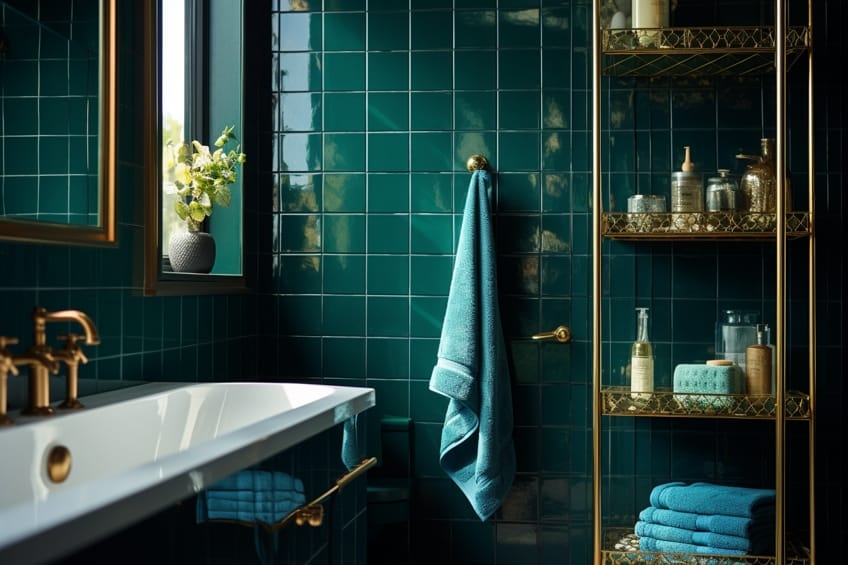
Green and Pink
So, what goes with green perfectly? A delightful combination perfect for the bedroom. Pink is one of the softer colors that go well with green. Green and pink have always been popular pairings. The two colors sit opposite one another on the color wheel. In the bedroom, adding generous amounts of green with soft pinks will make the space look gorgeous and where you feel safe. The best pairing would be a light shade of pink and green colors, such as salmon pink, and a light green such as seafoam. The furniture can be either light wood or even light gray, which will be perfect for this color combination, and then having white bed covers with pillows and throw blankets in pinks and greens will add to the harmonious feel. If you feel the color is too bland for your taste, adding a bright pink or green blanket will undoubtedly contribute to the accent. We hope these ideas give you a clearer picture of what goes with light green.
| Shade | Hex Code | CMYK Color Code (%) | RGB Color Code | Color |
| Seafoam Green | #93E9BE | 0.37, 0.00, 0.18, 0.09 | 147, 233, 190 | |
| Salmon | #FF8C69 | 0, 45, 59, 0 | 255, 140, 105 | |
| Bright Pink | #FF007F | 0, 100, 50, 0 | 255, 0, 127 |
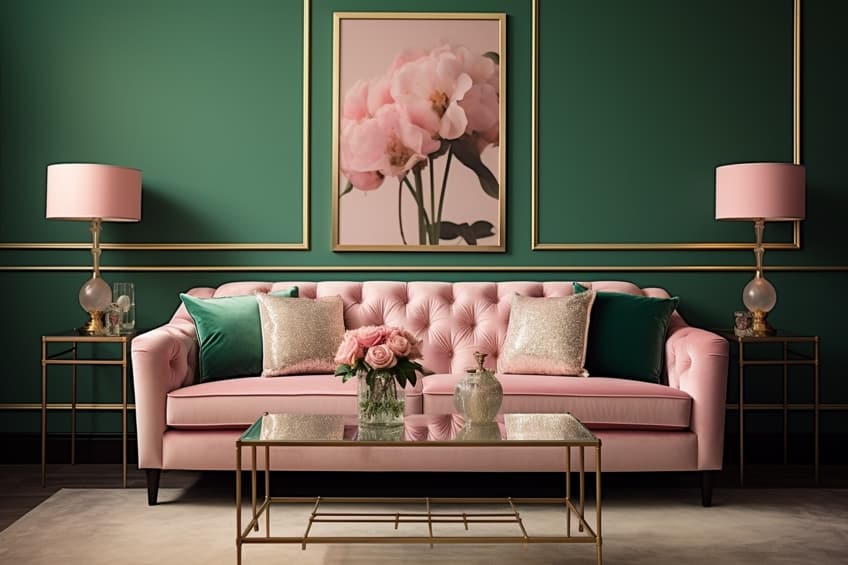
Green and Orange
These two colors may seem ostentatious when you first hear them because you are going to look at combining two very bright colors. Could you not knock it until you have tried it? The bright saturated orange color creates a significant amount of contrast when paired with the emerald green, which puts a playful and unexpected spin on this favored color combination. If you are contemplating using this color combination, you should add a few neutral elements to the room. You may have neutral dining room furniture in a soft brown color; this will be perfect as the base color. Consider bringing in a beautiful emerald carpet, and then the chairs could be covered in bright orange colors. To tone the bright colors down, add a few pale-ivory-colored candles onto the table or sideboard and a lovely soft green plant in the center of the table. Throw in some bottle green for contrast!
| Shade | Hex Code | CMYK Color Code (%) | RGB Color Code | Color |
| Emerald Green | #50C878 | 0.6, 0, 0.4, 0.22 | 80, 200, 120 | |
| Bottle Green | #0F472C | 79, 0, 38, 72 | 15, 71, 44 | |
| Orange | #FFA500 | 0, 0.35, 1, 0 | 255, 165, 0 | |
| Ivory | #FFFFF0 | 0, 0, 6, 0 | 100, 100, 94.1 |
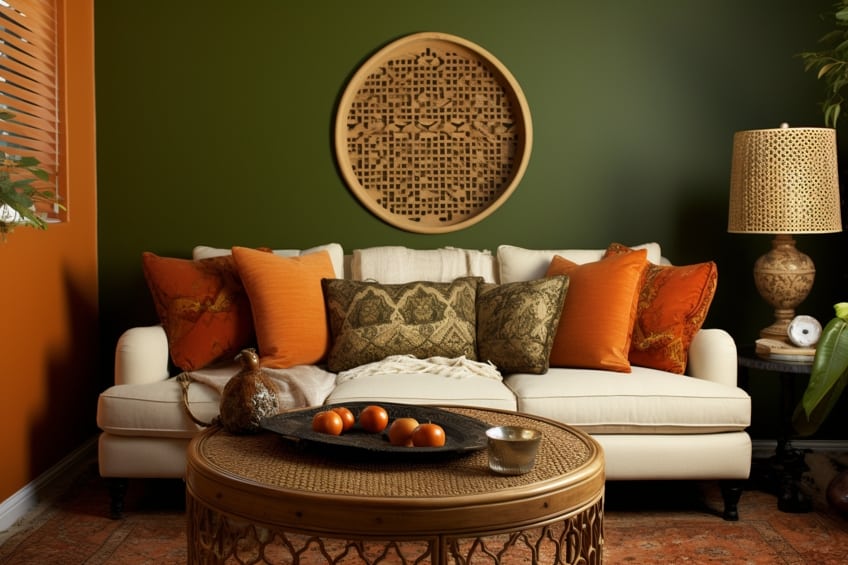
Green and White
The natural question is, what colors go well with sage green when considering incorporating this beautiful color into the home? Pairing green and white is lovely because the starkness of a white room will have the green pops of color in either plant, cushions, or beautiful artwork. It is a classic look, and while the white color may seem a bit too stark, adding a few warm beige colors will warm the room up considerably. Bringing in a beautiful big round rug with light beige colors and a stand-alone lamp in the corner of the room will bring warmth into the room. These two natural colors will help tone the space and make it more inviting, and you will see what color goes with light green at a glance.
| Shade | Hex Code | CMYK Color Code (%) | RGB Color Code | Color |
| Sage | #87AE73 | 22, 0, 34, 32 | 135,174,115) | |
| White | #FFFFFF | 0, 0, 0, 0 | 255, 255, 255 | |
| Beige | #F5F5DC | 0, 0, 10, 4 | 245, 245, 220 |

Green and navy create a classic and sophisticated color palette. The deep richness of navy complements the freshness of green, establishing a balanced and calming atmosphere. Use navy as a dominant color for furniture and large elements, while green can be introduced through accent pieces like throw pillows, artwork, or even a statement wall. Personal tip: Consider incorporating natural elements like potted plants or botanical prints to enhance the organic feel.
| Shade | Hex Code | CMYK Color Code (%) | RGB Color Code | Color |
| Lime Green | #899703 | 9, 0, 98, 41 | 137, 151, 3 | |
| Navy | #002060 | 100, 67, 0, 62 | 0, 32, 96 |

Green and Brown
Green and brown create a timeless and earthy color combination. Use deep, rich shades of green for walls or larger furniture items, and complement them with warm brown tones for flooring, trim, or smaller decor elements. Personal tip: Incorporate natural textures such as wooden furniture or woven rugs to enhance the organic feel, and introduce pops of metallic accents like bronze or brass to add a touch of sophistication.
| Shade | Hex Code | CMYK Color Code (%) | RGB Color Code | Color |
| Olive Green | #4B5531 | 12, 0, 42, 67 | 75, 85, 49 | |
| Brown | #5E2C04 | 0, 53, 96, 63 | 94, 44, 4 |

Emerald Green and Pink
Emerald green paired with pink creates a luxurious and vibrant palette. Use emerald green for statement furniture or accent walls, and introduce pink through textiles, artwork, or smaller decor items. Personal tip: Balance the boldness of these colors by incorporating neutral elements like white or gray, and play with different shades of pink to create depth and interest. Consider adding gold or mirrored finishes for a glamorous touch.
| Shade | Hex Code | CMYK Color Code (%) | RGB Color Code | Color |
| Emerald Green | #1A8F6F | 82, 0, 22, 44 | 26, 143, 111 | |
| Dirty Cool Pink | #DBA9C4 | 0, 23, 11, 14 | 219, 169, 196 |
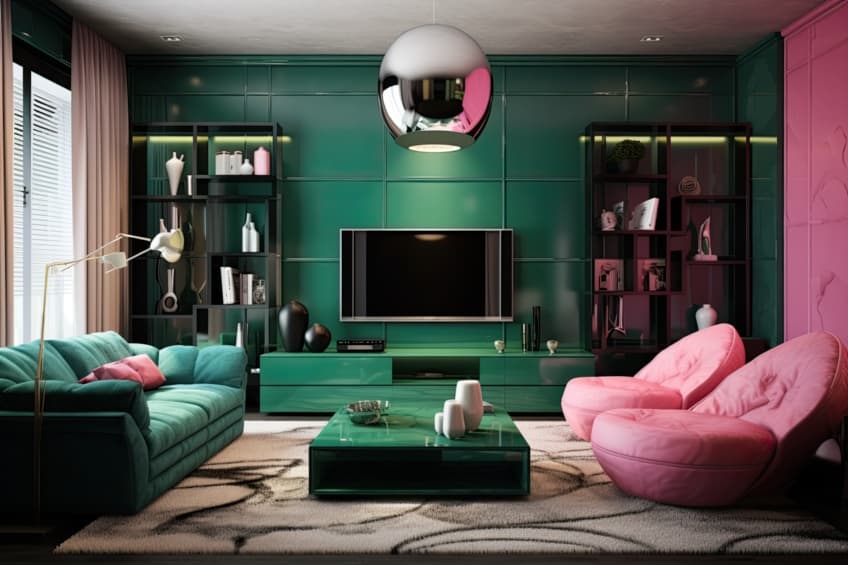
Olive Green and Yellow
Olive green and yellow form a warm and inviting color combination. Use olive green for larger elements and yellow for accent pieces like throw pillows. Personal tip: Opt for natural light to enhance the warmth of these colors, and introduce patterned textiles in a mix of olive and yellow to create visual interest. Incorporate natural materials like wood or rattan to bring a touch of the outdoors inside.
| Shade | Hex Code | CMYK Color Code (%) | RGB Color Code | Color |
| Dark Olive Green | #535724 | 5, 0, 59, 66 | 83, 87, 36 | |
| Bright Mustard | #E8B446 | 0, 22, 70, 9 | 232, 180, 70 | |
| Pastel Yellow | #F6F09C | 0, 2, 37, 4 | 246, 240, 156 | |
| Light Olive Green | #909161 | 1, 0, 33, 43 | 144, 145, 97, 57 |
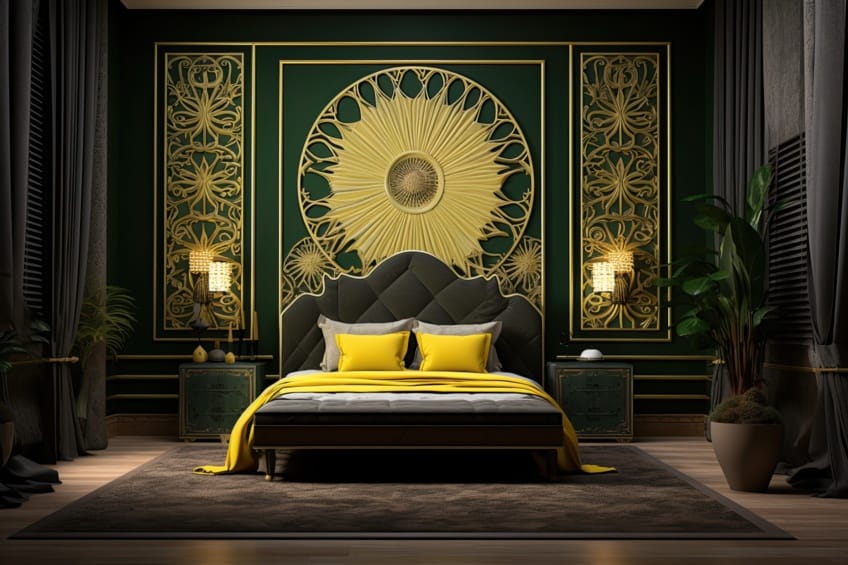
Mint Green and Coral
Mint green and coral form a lively and refreshing combination, perfect for creating a cheerful ambiance. Use mint green as the primary color for walls or large furniture items, while coral can be introduced through accessories and smaller decor items. Personal tip: Add metallic accents, such as gold or brass, to enhance the vibrancy of this pairing and bring a touch of sophistication.
| Shade | Hex Code | CMYK Color Code (%) | RGB Color Code | Color |
| Mint Green | #98FF98 | 27, 0, 27, 0 | 152, 255, 152 | |
| Coral | #FF6F61 | 0, 73, 63, 0 | 255, 111, 97 |
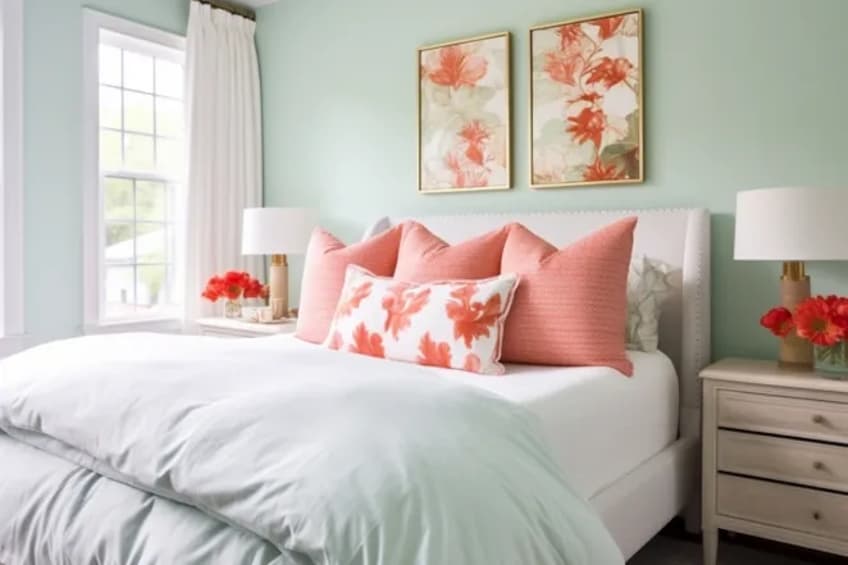
Sage Green and Lavender
Sage green and lavender create a soothing and harmonious palette, ideal for bedrooms or relaxation spaces. Use sage green as the base color for walls or larger elements, and incorporate lavender through textiles, such as bedding or curtains. Personal tip: Introduce soft, natural lighting to enhance the calming effect, and choose furniture with clean lines for a modern twist.
| Shade | Hex Code | CMYK Color Code (%) | RGB Color Code | Color |
| Sage Green | #C1D98E | 28, 0, 43, 15 | 193, 217, 142 | |
| Lavender | #967BB6 | 31, 39, 0, 29 | 150, 123, 182 |
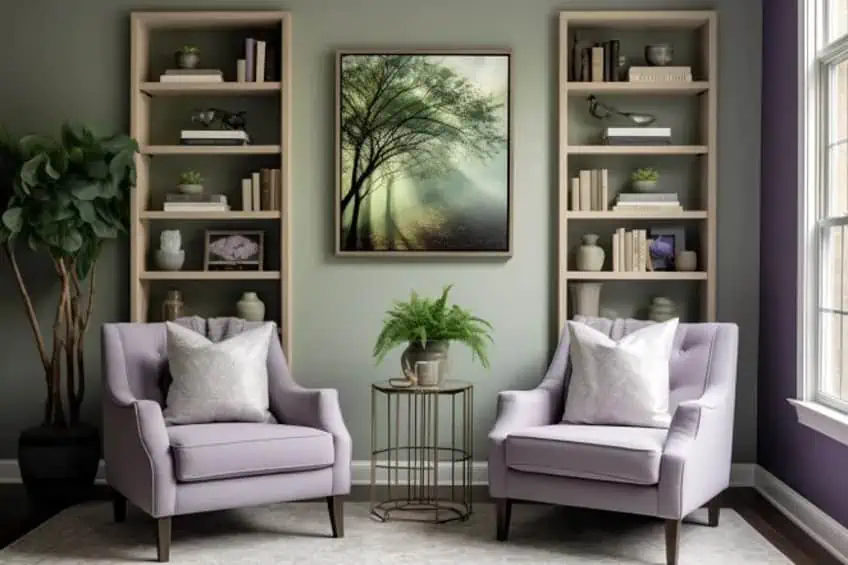
Forest Green and Gold
Forest green and gold evoke a sense of luxury and opulence. Consider using forest green for upholstery and gold for accent details like frames, lamps, or trim. Personal tip: Incorporate rich textures like velvet for an extra layer of sophistication, and use ambient lighting to highlight the gold accents and create a warm, inviting atmosphere.
| Shade | Hex Code | CMYK Color Code (%) | RGB Color Code | Color |
| Forest Green | #228B22 | 85, 0, 90, 45 | 34, 139, 34 | |
| Gold | #FFD700 | 0, 0, 100, 0 | 255, 215, 0 |
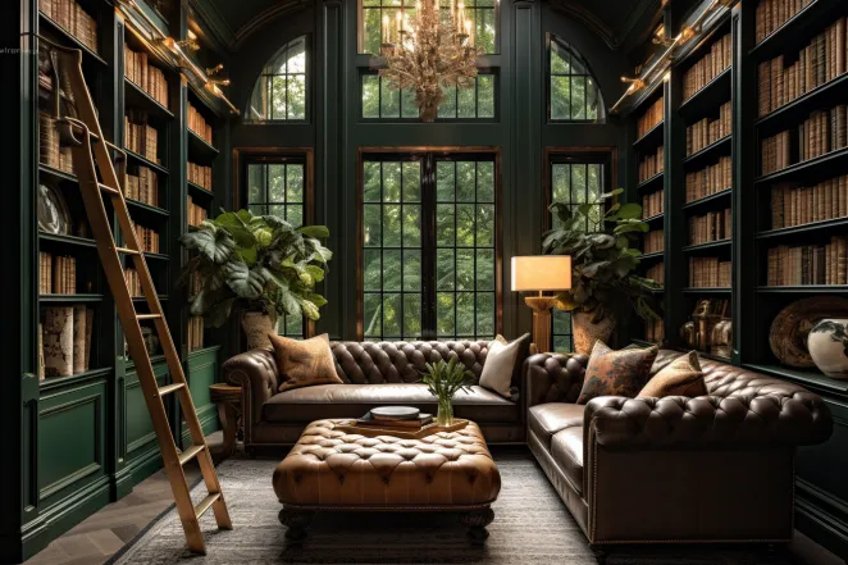
Pistachio Green and Soft Gray
Pistachio green paired with soft gray creates a subtle and elegant palette. Use soft gray as the neutral base for walls and larger furniture, and introduce pistachio green through decor items like throw blankets, rugs, or vases. Personal tip: Opt for furniture with clean lines and light wood tones to maintain a sense of airiness and modernity.
| Shade | Hex Code | CMYK Color Code (%) | RGB Color Code | Color |
| Pistachio Green | #93C572 | 26, 0, 55, 7 | 147, 197, 114 | |
| Soft Gray | #D3D3D3 | 0, 0, 0, 18 | 211, 211, 211 |
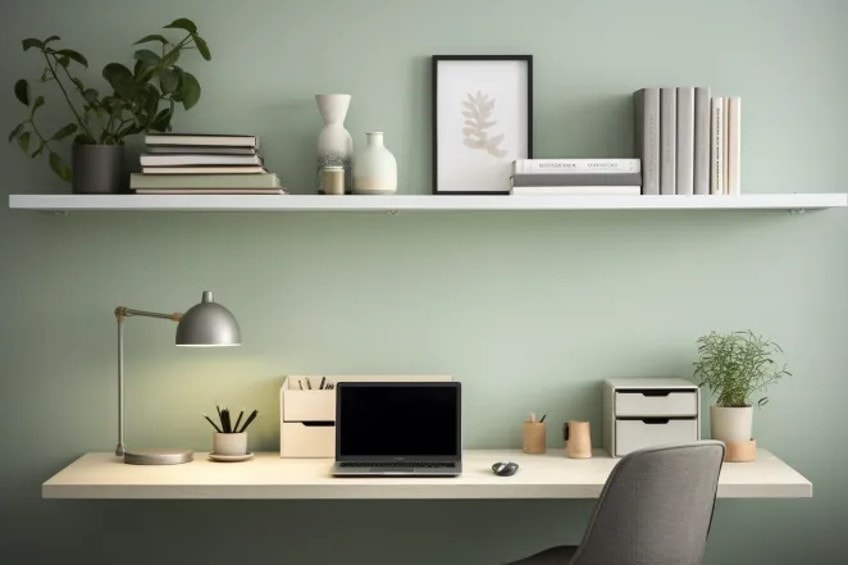
Hunter Green and Burgundy
Hunter green and burgundy bring a sense of richness and depth to a space. Consider using hunter green for statement furniture pieces and burgundy for accent elements like throw pillows or curtains. Personal tip: Balance the darker tones with neutral elements like cream or beige to prevent the space from feeling too heavy.
| Shade | Hex Code | CMYK Color Code (%) | RGB Color Code | Color |
| Hunter Green | #355E3B | 71, 25, 91, 18 | 53, 94, 59 | |
| Burgundy | #800020 | 0, 100, 75, 36 | 128, 0, 32 |
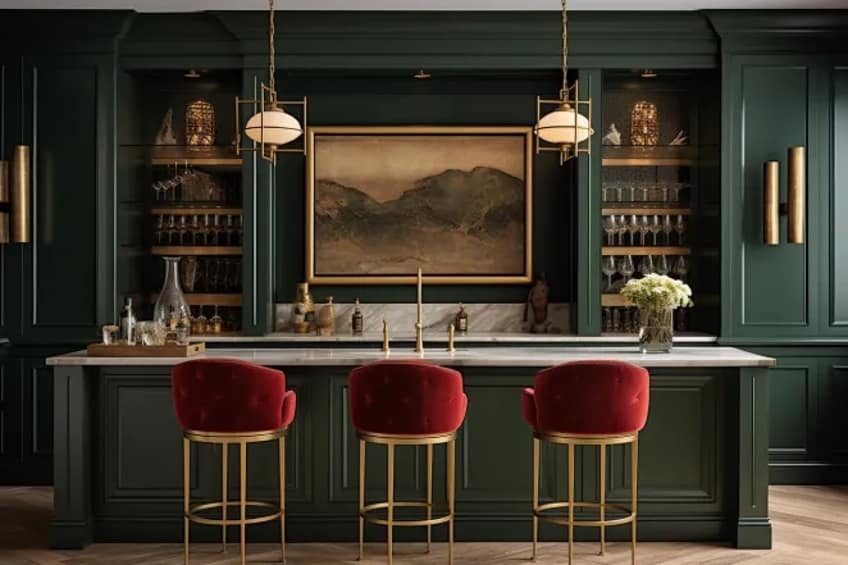
Teal Green and Mustard
Teal green and mustard create a bold and energetic color scheme. Use teal as the dominant color for larger pieces and mustard as an accent through smaller furniture items. Personal tip: Mix patterns and textures in similar tones to add visual interest, and incorporate natural materials like wood or rattan to bring warmth to the space.
| Shade | Hex Code | CMYK Color Code (%) | RGB Color Code | Color |
| Teal Green | #008080 | 100, 0, 33, 50 | 0, 128, 128 | |
| Mustard | #FFDB58 | 0, 10, 70, 0 | 255, 219, 88 |

Celery Green and Sky Blue
Celery green and sky blue form a fresh and invigorating combination. Use celery green for larger elements like furniture and walls, and introduce sky blue through decor accessories. Personal tip: Bring in natural light to enhance the airy feel, and incorporate white or light-colored furniture to maintain a crisp and clean look.
| Shade | Hex Code | CMYK Color Code (%) | RGB Color Code | Color |
| Celery Green | #BFFF00 | 29, 0, 80, 0 | 191, 255, 0 | |
| Sky Blue | #87CEEB | 32, 3, 0, 11 | 135, 206, 235 |
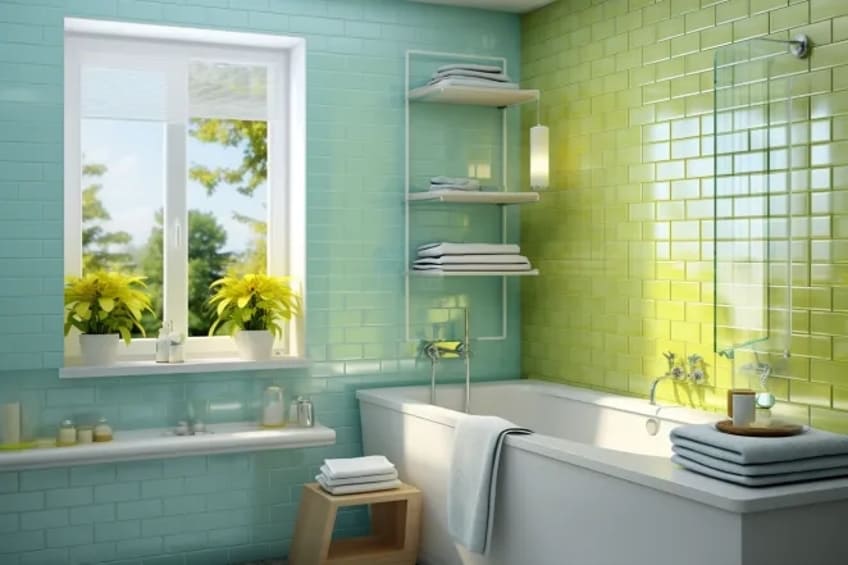
Chartreuse Green and Charcoal Gray
This color combination creates a modern and sophisticated palette. Use charcoal gray as the primary color for walls or large furniture, and incorporate chartreuse green through statement decor pieces. Personal tip: Add metallic accents, such as silver or chrome, to enhance the contemporary feel and create a visually dynamic space.
| Shade | Hex Code | CMYK Color Code (%) | RGB Color Code | Color |
| Chartreuse Green | #7FFF00 | 30, 0, 90, 0 | 127, 255, 0 | |
| Charcoal Gray | #36454F | 70, 50, 50, 50 | 54, 69, 79 |
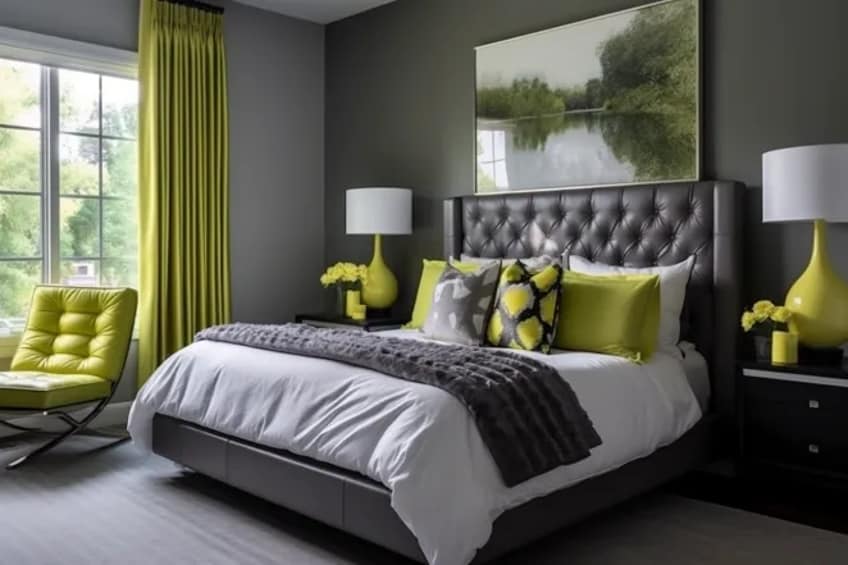
Aqua Green and Peach
Aqua green and peach create a playful and youthful color combination. Use aqua green as the base color for walls or larger elements, and introduce peach through textiles. Personal tip: Incorporate whimsical patterns and artwork to enhance the playful vibe, and consider using light-colored furniture to maintain a bright and cheerful atmosphere.
| Shade | Hex Code | CMYK Color Code (%) | RGB Color Code | Color |
| Aqua Green | #00FFFF | 100, 0, 0, 0 | 0, 255, 255 | |
| Peach | #FFDAB9 | 0, 16, 24, 0 | 255, 218, 185 |
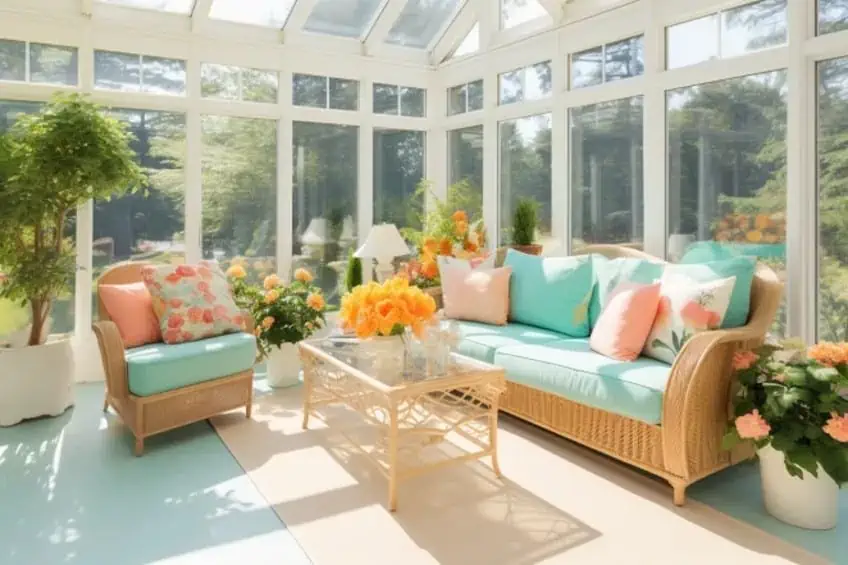
Kelly Green and Cream
Kelly green and cream offer a vibrant yet sophisticated pairing. Use kelly green for statement furniture or accent walls, and balance it with cream for a neutral backdrop. Personal tip: Introduce natural textures like rattan or jute to add warmth, and use pops of metallic accents for a touch of glamour.
| Shade | Hex Code | CMYK Color Code (%) | RGB Color Code | Color |
| Kelly Green | #4CBB17 | 79, 0, 100, 0 | 76, 187, 23 | |
| Cream | #FFFDD0 | 0, 0, 13, 0 | 255, 253, 208 |
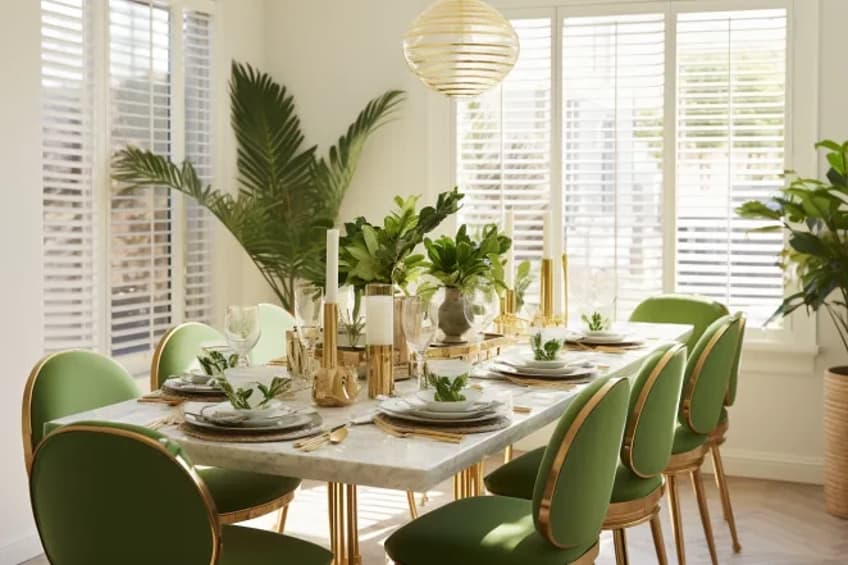
Seafoam Green and Terracotta
Seafoam green and terracotta create a calming and earthy color scheme. Use seafoam green for walls or larger pieces, and bring in terracotta through accessories and decor items. Personal tip: Incorporate indoor plants to enhance the natural feel, and choose furniture with clean lines and natural finishes for a cohesive look.
| Shade | Hex Code | CMYK Color Code (%) | RGB Color Code | Color |
| Seafoam Green | #90EE90 | 40, 0, 40, 0 | 144, 238, 144 | |
| Terracotta | #E2725B | 0, 54, 36, 11 | 226, 114, 91 |
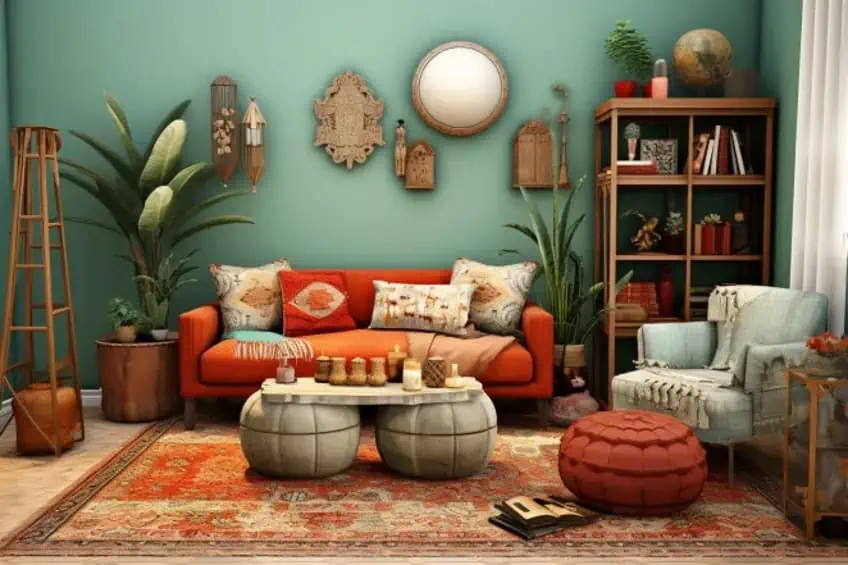
Turquoise Green and Beige
Turquoise green paired with beige creates a serene and beachy atmosphere. Use beige as the primary color for larger elements and introduce turquoise green through accessories and smaller decor items. Personal tip: Choose furniture with light-colored upholstery to maintain a relaxed and casual feel, and add natural materials like sisal or seagrass for a coastal touch.
| Shade | Hex Code | CMYK Color Code (%) | RGB Color Code | Color |
| Turquoise Green | #00C78C | 88, 0, 62, 21 | 0, 199, 140 | |
| Beige | #F5F5DC | 0, 0, 14, 4 | 245, 245, 220 |

Fern Green and Lilac
Fern green and lilac offer a harmonious and nature-inspired color combination. Use fern green for larger elements and lilac for accent pieces like pillows or artwork. Personal tip: Incorporate natural light to enhance the vibrancy of these colors, and choose furniture in earthy tones to create a balanced and organic look.
| Shade | Hex Code | CMYK Color Code (%) | RGB Color Code | Color |
| Fern Green | #4F7942 | 58, 0, 80, 69 | 79, 121, 66 | |
| Lilac | #C8A2C8 | 25, 40, 0, 20 | 200, 162, 200 |
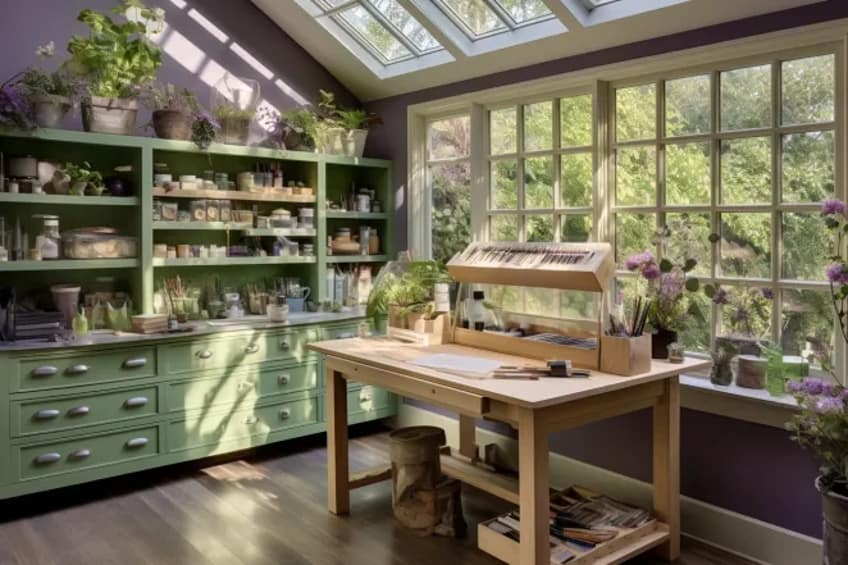
Moss Green and Copper
Moss green and copper create a warm and inviting palette. Use moss green for walls or larger pieces and incorporate copper through lighting fixtures, decor accessories, or even furniture accents. Personal tip: Use warm-toned wood finishes to complement the copper elements and create a cohesive, inviting atmosphere.
| Shade | Hex Code | CMYK Color Code (%) | RGB Color Code | Color |
| Moss Green | #8A9A5B | 38, 14, 73, 11 | 138, 154, 91 | |
| Copper | #B87333 | 20, 45, 73, 4 | 184, 115, 51 |
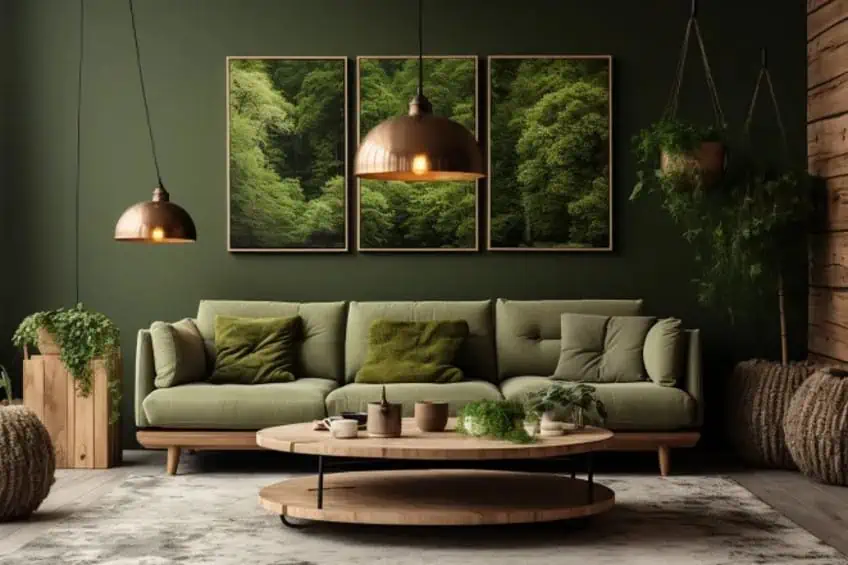
Jade Green and Silver Gray
Jade green and silver gray provide a sophisticated and elegant color scheme. Use silver gray as the primary color for walls or larger elements, and introduce jade green through textiles and decor items. Personal tip: Incorporate reflective surfaces like mirrors or metallic finishes to enhance the glamour of this combination, and choose furniture with clean lines for a modern touch.
| Shade | Hex Code | CMYK Color Code (%) | RGB Color Code | Color |
| Jade Green | #00A86B | 86, 0, 77, 33 | 0, 168, 107 | |
| Silver Gray | #C0C0C0 | 0, 0, 0, 25 | 192, 192, 192 |
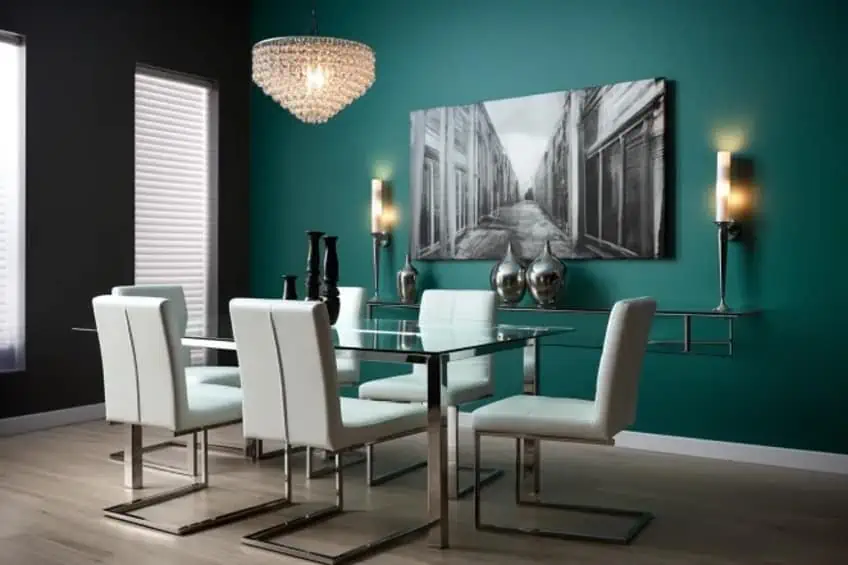
Changing the interior of a home by incorporating the color green is the easiest way to bring the outside into the house. With many more people staying home over the weekends, it has become essential to have the best of both worlds. We hope this article has helped you decide what colors go with green, and with your next project, you look at green with different eyes and make it the go-to choice for your home!
Frequently Asked Questions
What Are Colors That Go Well With Green?
Green colors pair well with a vast array of colors, such as neutral colors like brown and gray, and other vibrant and maybe unexpected colors such as pink, yellow and blue. What colors go with green, and even colors that go well with olive green, are questions that open up Pandora’s box because so many colors pair beautifully with all shades of green, and the best thing is that the green color hue also complements each other.
Can You Pair Green With Neutral Colors?
Green is versatile and pairs well with neutral tones like white, gray, and beige for a fresh and timeless look. It also complements vibrant colors such as mustard yellow, coral, or navy for a lively and energetic combination.
Are There Specific Shades of Green That Work Better With Certain Colors?
Lighter greens, like mint or lime, pair well with pastels and lighter tones. Deeper greens, such as forest or emerald, work harmoniously with rich colors like burgundy, mustard, or navy.
Duncan graduated with a diploma in Film and TV production from CityVarsity in 2018, after which he continued pursuing film while taking on a keen interest in writing along the way. Since having graduated, he began working as a freelance videographer, filming a variety of music videos, fashion and short films, adverts, weddings and more. Throughout this, he’s won a number of awards from various film festivals that are both locally and internationally recognized. However, Duncan still enjoys writing articles in between his filming ventures, appreciating the peace and clarity that comes with it.
His articles focus primarily around helping up-and-coming artists explore the basics of certain colors, how these colors can be paired with other shades, as well as what colors are created when you mix one with another. All while relating these shades to historically significant paintings that have incorporated them into their color palette. As a lover of the arts himself, he takes great interest in the Renaissance era of paintings, an era that has directly inspired many of his favorite films.
Learn more about Duncan van der Merwe and about us.
